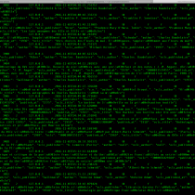About
The Martin Bodmer Foundation maintains a unique collection of inscriptions, manuscripts and printed documents, from the oldest examples of writing up through the present day, chosen for their status as remarkable evidence of human thought and creativity. The Bodmer Lab, a hub for research and digitisation born out of a partnership between the University of Geneva and the Martin Bodmer Foundation, has made a significant number of these rare and fragile documents available to the public.
The selection of digitised works is guided by two goals:
- In order to favour the effective use of information technology in humanities research, the Bodmer Lab has collaborated with specialists who have been entrusted with the use of the data to lead innovative projects, the results of which are presented here.
- The Bodmer Lab uses new technology to bring to the fore the structure of this unique “library of world literature.”
Through videos, images libraries, digital stores and games, the Bodmer Lab also speaks to a wider audience, schoolchildren, explorers and lovers of learning.
Candidates for digitisation. Photo Martin Bodmer Foundation / Naomi Wenger, 2016.
The Bodmer Lab developed through a set of choices, by taking specific paths from among a number of different possibilities which were available to us. These were conscious bets, weighed deliberately, and the decision process clarifies how the present form of the site came into being.
The Bibliotheca Bodmeriana was conceived by Martin Bodmer as a “library of world literature.” We decided to take this intellectual ambition seriously and make it the guiding principle of the Bodmer Lab.
The research done on the collector’s archive has given due weight to his thinking on “Weltliteratur”: a rich and thorough philosophy of the history of culture devoted to the ideal of peace. The work conducted in the different digital holdings also brings to light their place in human history, and the parties have taken care to vary the time period and cultures they present.
Betting on physical bibliography
Today, it is easy to upload and download thousands of books. However, the value of the Martin Bodmer collection does not derive merely from the texts it contains, but instead from the value of each of the editions in which the texts are available to read.
This attention devoted to the page itself, rather than only the text, is the basis of what physical bibliography offers to the history of culture.
Two versions of fable by La Fontaine published two hundred years apart are not simply the “same” text: one will be illustrated, adorned with drop-cap letters and culs-de-lampe, spread over three pages in a refined typography that underscores the liveliness of the dialogues. The other will be printed on a single, compact page, embellished with footnotes that prompt re-readings and provide annotations.
This attention devoted to the page itself, rather than only the text, is the basis of what physical bibliography offers to the history of culture. In the Bodmer collection, the diversity of presentations possible for each text is striking for each of the documents.
We have prioritised the materiality of the works, which is why we have planned to use Optical Character Recognition (OCR) later rather than sooner: this way, the texts come into view through the lens of their editorial editions.
Betting on "smart data"
So that the documents do not quickly become lost in a sea of data available on the Internet, they must be incorporated into a digital project that ensures the data are reliable and can highlight the importance of their publication.
The real value of the Bodmer Bodmeriana owes to the way different texts were arranged by Martin Bodmer to form a whole.
The Bodmer collection is nearly endless, and it seemed unrealistic to us to begin to digitise it all straightaway. Exhaustiveness can actually be misleading when put into practice.
The real value of the Bodmer Bodmeriana owes to the way different texts were arranged by Martin Bodmer to form a whole. Each holding has its own particularities: papyri that are more than two thousand years old require different technological treatment than editions of Faust from the 19th century.
Before aggregating hundreds of thousands of digitised pages in the name of “big data,” it is important to note their important distinct traits during any coding process. When commentaries which highlight the cultural significance of these data are added to the equation, we are instead dealing in the realm of “smart data.”
Betting on the "constellations"
The Bibliotheca Bodmeriana is coherent across two axes. In the broader sense, the collection represents Martin Bodmer’s project of assembling a “library of world literature.” We have dedicated a large component of our research to this consideration.
But the collection also coheres on more local levels, having to do with Bodmer’s acquisitions of already-structured holdings (handwritten texts, papyri), organised around either an exceptionally thorough set of documents from a specific period (the Elizabethan era) or a given theme (the Faust myth).
In order to better appreciate the value of these strong points in the collection, we have approached them as “constellations,” partially autonomous and requiring specific subject knowledge. Consequently, we have decided to entrust the scientific supervision of each to internationally-recognised specialists in the given field.
Betting on the diversity of audiences
By putting documents from the Bodmer collection online, the Bodmer Lab has made different types of use possible.
People searching for a specific work or handwritten text will be able to use the search bar on the home page, so that they can directly access the digitisation.
Web users eager to learn more about the collection, or intrigued by one of the constellations available will be able to leisurely to add to their knowledge by watching informative videos or by reading analytical and contextual writings. In their case, viewing digitised documents will be one of several steps on their journey through world literature.
One section of the site, titled “declensions,” highlights fun or artistic uses of the Bodmer Lab’s data. We hope to encourage a type of relationship with cultural heritage that is willing to make use of games and inspire personal creation.
Other endeavors, like the “image libraries” (Faust, De Bry) or the “Didactic” constellation, offer pedagogical resources. In addition to the large quantity of information provided on the site, teachers can find tools which can easily be used in their classrooms.
Team
Direction
Researchers
Data management and structuring
Catalog and digitization
Former Bodmer Lab Collaborators
Since its inception, the Bodmer Lab has benefited from the unwavering support of the University of Geneva and the Martin Bodmer Foundation.
It was able to grow thanks to the exceptional support of the Fondation Ernst and Lucie Schmidheiny.
The research carried out within the Bodmer Lab has often been the subject of collaborations with our colleagues in Switzerland and abroad: Geneva University of Art and Design, Swiss Federal Institute of Technology Lausanne, University of Lausanne, University of Bern, Teacher Training College of Valais (HEPVS), University of Paris-Sorbonne, University of Paris-Est Marne-la-Vallée, National Institute of Oriental Languages and Civilizations (INALCO), the École des Chartes, Brigham Young University-Hawaii.
Our collaboration with Editions d'Ithaque, in Paris, has given us the assurance of publishing the results of our research in publications of irreproachable quality.
Bodmer Lab Scientific Committee
Jacques Berchtold, Director of the Martin Bodmer Foundation, Sophie Bertrand, Head of digital cooperation services and of Gallica, Bibliothèque nationale de France, Roger Chartier, Professor at the Collège de France, Robert Darnton, Professor at Harvard University, Milad Doueihi, Professor and Chair of Digital Humanities at the University of Paris-Sorbonne, Marie-Luce Demonet, Professor of French literature and Director of the MSH Val de Loire and director of the project, “Virtual Humanist Libraries”, Dan Edelstein, Professor at Stanford University, Stephen Nichols, Professor at Johns Hopkins University.




































